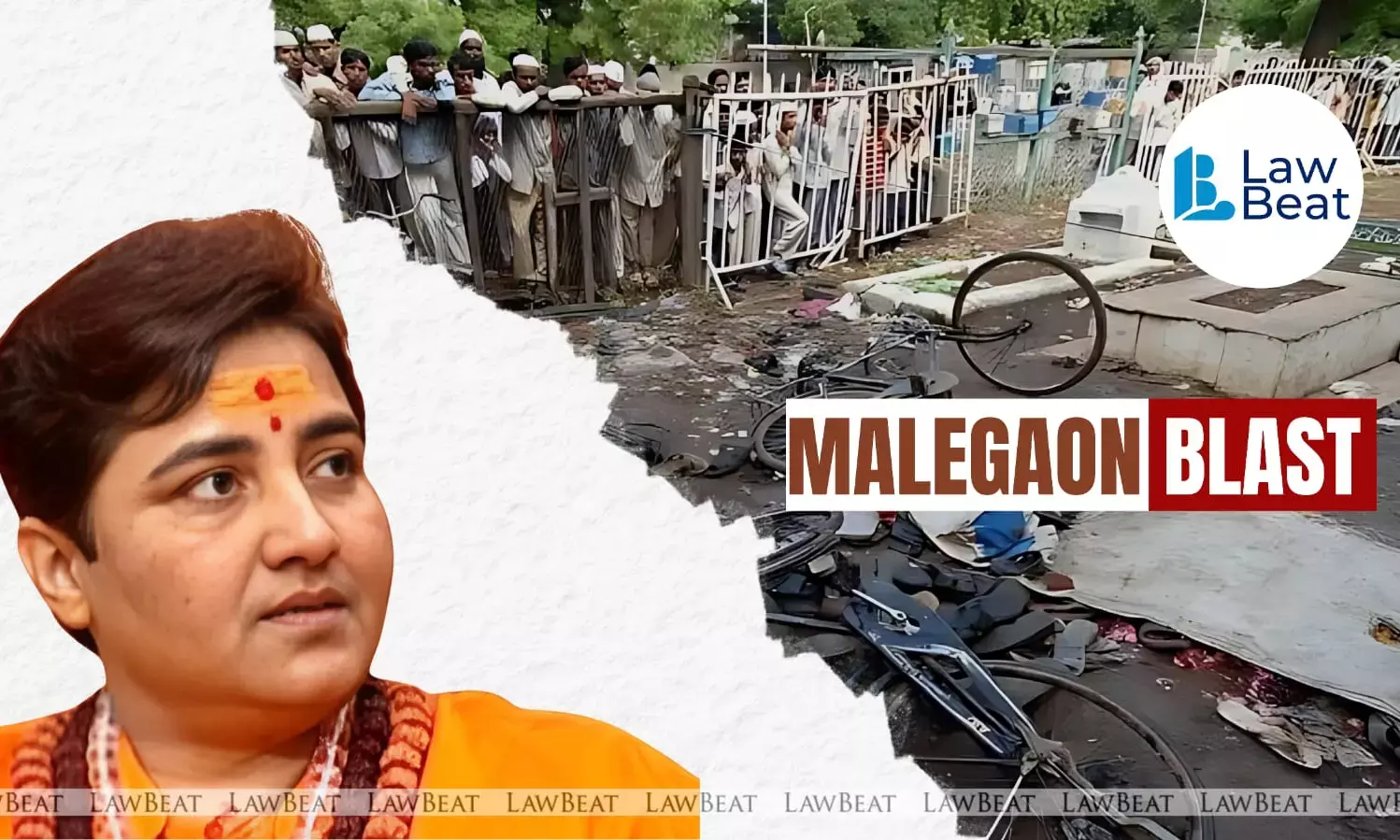How Courts Dismantled the ‘Hindu Terror’ Narrative in Malegaon Blast Acquittals

The Bombay High Court issues notices to NIA and acquitted accused in the 2008 Malegaon blast case after victims' families challenge the acquittal
On July 31, 2025, Special Court for NIA cases in Mumbai, presided over by Judge A. K. Lahoti, delivered its judgment in National Investigation Agency v. Sadhvi Pragya Singh Thakur & Ors., acquitting all seven accused in the 2008 Malegaon bomb blast case.
The court held that the prosecution had failed to establish guilt beyond reasonable doubt and that the evidence brought on record was unreliable, inconsistent, and insufficient to sustain charges under the Unlawful Activities (Prevention) Act (UAPA) and Indian Penal Code.
The case concerned a bomb explosion on the night of September 29, 2008, near Bhikku Chowk in Malegaon, a town in Maharashtra with a sizeable Muslim population. The blast, triggered by explosives strapped to a motorcycle, killed six and injured over a hundred. What followed was a series of arrests by the Maharashtra Anti-Terrorism Squad (ATS), with the probe later handed over to the NIA in 2011.
The arrests, particularly of individuals linked with Hindutva ideologies, led to the coinage and political projection of the phrase 'Hindu terror' during the tenure of the then UPA government.
Over time, this narrative became central to public discourse around domestic extremism.
The trial, which began in October 2018, saw the examination of 323 prosecution witnesses, eight defence witnesses, and 40 hostile witnesses. The judgment, running over 500 pages, scrutinised the evidence and testimonies in granular detail.
The court highlighted procedural lapses and inconsistencies that rendered the foundational aspects of the case unreliable.
One of the key findings was the irregular registration of the First Information Report (FIR). The court noted that the prosecution's own witnesses could not confirm the authorship or signatures on the FIR.
Another crucial angle that the court dismantled was the alleged use of a motorcycle linked to Sadhvi Pragya Singh Thakur. On pages 237, 244, and 252, the court pointed out how essential vehicle identifiers such as engine and chassis numbers were not properly preserved or verified. The RTO official, PW-122, admitted that when he examined the seized parts, they were not sealed and had been lying in open condition. He confirmed that no effort was made to confirm whether the parts were in working condition or whether they had been interchanged with other condemned vehicles.
While the political narrative that emerged in the late 2000s sought to establish the Malegaon case as a textbook example of Hindutva-motivated terror, the NIA court judgment finds that the case was riddled with speculation, weak evidence, and a prejudicial approach.
The court’s findings drew heavily on testimony that exposed critical evidentiary flaws;
PW-301, a key police witness, was unable to identify the person who prepared the FIR (Exh. 5883), denied signing it, and disowned the communal language allegedly inserted without his instruction. He also pointed out inconsistencies in related station diary entries (Exhs. 5844, 5883, 5944).
The panchnama, an official record of recovered material, was compromised by the testimony of PW-124. He could not read or write Marathi and admitted that he signed the document based on explanations given to him in Hindi. He did not witness the recovery firsthand and could not name the officers conducting the panchnama.
PW-123 stated his oral complaint (Exh. 5944) was typed by an unnamed operator and could not confirm the accuracy of the corresponding diary entry.
One witness confirmed that Pragya Singh Thakur had not come personally to collect the bike, and that it was delivered instead to a broker named Vallabhbhai Goyani, who made the payment. Goyani himself testified after a gap of 12 years and admitted that the original records had been destroyed as per standard business practice. The address allegedly provided by Pragya Singh, listed as “3, Tapi Baug, Shopping Center,” was shown to be a commercial complex, not a residence, and there was no proof of her residence or ID verification. On page 270, the testimony of Suresh Kumar further weakened the claim, as he failed to retain any ID proof or confirm whether the address provided matched any official document.
The forensic and ballistic evidence, often critical in terror cases, also lacked legal robustness. The court noted that there were contradictions about the number and type of vehicles at the scene, the type of explosive used, and whether the splinters and debris could be reliably linked to the accused. At one point, even the presence of a second motorcycle and five bicycles added to the confusion.
These collective inconsistencies critically weakened the prosecution’s attempt to link the accused to the crime.
The Malegaon judgment acts as a decisive legal response to the 'Hindu terror' label once amplified by sections of the political establishment. It underscores that criminal courts are not theatres for ideology, and convictions cannot rest on political expediency or public sentiment.
The ruling reaffirms that due process, evidentiary integrity, and fairness are the bedrock of the criminal justice system. In Malegaon, the courts did not just acquit; they dismantled a narrative that lacked legal foundation.
Case Title: National Investigation Agency v. Sadhvi Pragya Singh Thakur & Ors.
Judgment Date: July 31, 2025
Bench: Judge A. K. Lahoti
